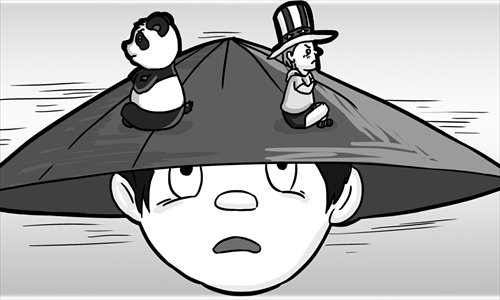Vietnam looking to play pivotal role with both China and US

No analyst residing in a country that has gone to war with Vietnam can doubt Hanoi's commitment to maintaining its own independence. Vietnam has also learned from history that too much reliance on a major power can have negative consequences.
This historical backdrop is a necessary reminder to readers that Vietnam is not aligning with the US to oppose China. Since 1991 Vietnam has pursued a foreign policy to diversify and multilateralize its relations and become a reliable partner to all countries. This has been a success. Vietnam was the Asia's bloc unanimous choice as its representative for a seat on the UN Security Council as a non-permanent member and it has entered into strategic partnerships with Russia, Japan, India, China, South Korea, Spain, the UK, and Germany.
Vietnam seeks to be the pivot in relations with China and the US. In other words, Vietnam seeks to develop comprehensive ties with each and make each bilateral relationship important in its own right. As pivot, Vietnam wants China and the US to accept Vietnam as a reliable partner. Vietnam wants to shape its relations with both so it does not have to ally with one side against the other.
In 2003, Vietnam's Communist Party adopted the terms "to cooperate" and "to struggle" to guide its relations with both China and the US. This formulation overcame an apparent contradiction in Vietnamese ideological thinking: how to explain friction and conflict with socialist China and how to explain areas of common interests with the "imperialist" US. Vietnam decided to cooperate with both but to struggle when Vietnam's core interests are challenged.
The US has announced a policy of rebalancing its military presence in the Asia-Pacific region. Some Chinese and regional analysts have concluded that the US is attempting to contain China. As part of its rebalancing policy, the US has sought to upgrade its defense relations with Vietnam. Vietnam has been receptive but only up to a point. For example, for the past three years Vietnam and the US have conducted joint naval activities, but these are not military exercises involving the exchange of combat skills.
The best way to view US-Vietnam defense relations is to compare them with China's defense relations with Vietnam. Vietnam exchanges high-level visits with both countries. Vietnam conducts strategic dialogues with both countries and recently raised the level to that of deputy defense minister with both countries. Vietnam permits all countries to make naval port visits, but restricts this to one visit a year, including the US. In 2010, for example, the USS John S. McCain destroyer visited the Da Nang Port, several months later one of China's most modern guided missile frigates also called in.
The US would like greater access to Vietnam. Defense Secretary Leon Panetta made that clear during his recent visit to Cam Ranh Bay. But it is highly unlikely that US warships will visit that port soon. Vietnam has opened the commercial repair facilities at Cam Ranh to all navies. The US is the first to take up this offer by sending three military sealift command ships for minor repairs. These ships are logistic vessels, not warships, and are crewed by civilians.
Vietnam's 2009 white paper on national defense outlines its policy of maintaining independence. I have dubbed this policy "the three no's:" no foreign bases on Vietnamese territory, no military alliances, and no use of a third country to oppose another country. The US may want to increase navy access to Vietnam but Hanoi will resist a US naval presence to protect its independence.
In 2009, tensions rose in the South China Sea, Vietnam responded by signaling that they supported a US navy presence to counterbalance China. Vietnam demonstrated this in a symbolic way by flying out to US aircraft carriers to observe flight operations. In other words, Vietnam was playing the role of a pivot. It enhanced its cooperation with the US, but did not align with the US to confront China.
Finally, there is another reason why Vietnam will impose limits on its defense relations with the US. An editorial by the Global Times on July 11 captures this point nicely. It states, "Hanoi is counting on China to vindicate its political choices [following the path of China, realizing rapid development by taking the road of gradual reform], but also wants to counter China by leveraging US power." The commentary notes that Vietnam has to strike a balance between its external relations and domestic political forces.
There are many political leaders in Vietnam who fear that the US has the ultimate objective of regime change through peaceful evolution. Vietnamese leaders are not of one mind on this issue and Vietnam often pursues contradictory policies. For example, Vietnam lobbies the US to remove restrictions on arms sales while repressing bloggers at the same time even though the US has set human rights pre-conditions on arms sales.
In conclusion, the solution to Vietnam's dilemma, is not, as the Global Times' editorial advocates, "to coordinate with China to limit the US pivot to Asia," but to maintain Vietnam's independence by acting as the pivot between China and the US.
The author is an emeritus professor with the University of New South Wales at the Australian Defence Force Academy, Canberra. opinion@globaltimes.com.cn
Related:
Vietnam: Politics remains tight barrier for diplomats